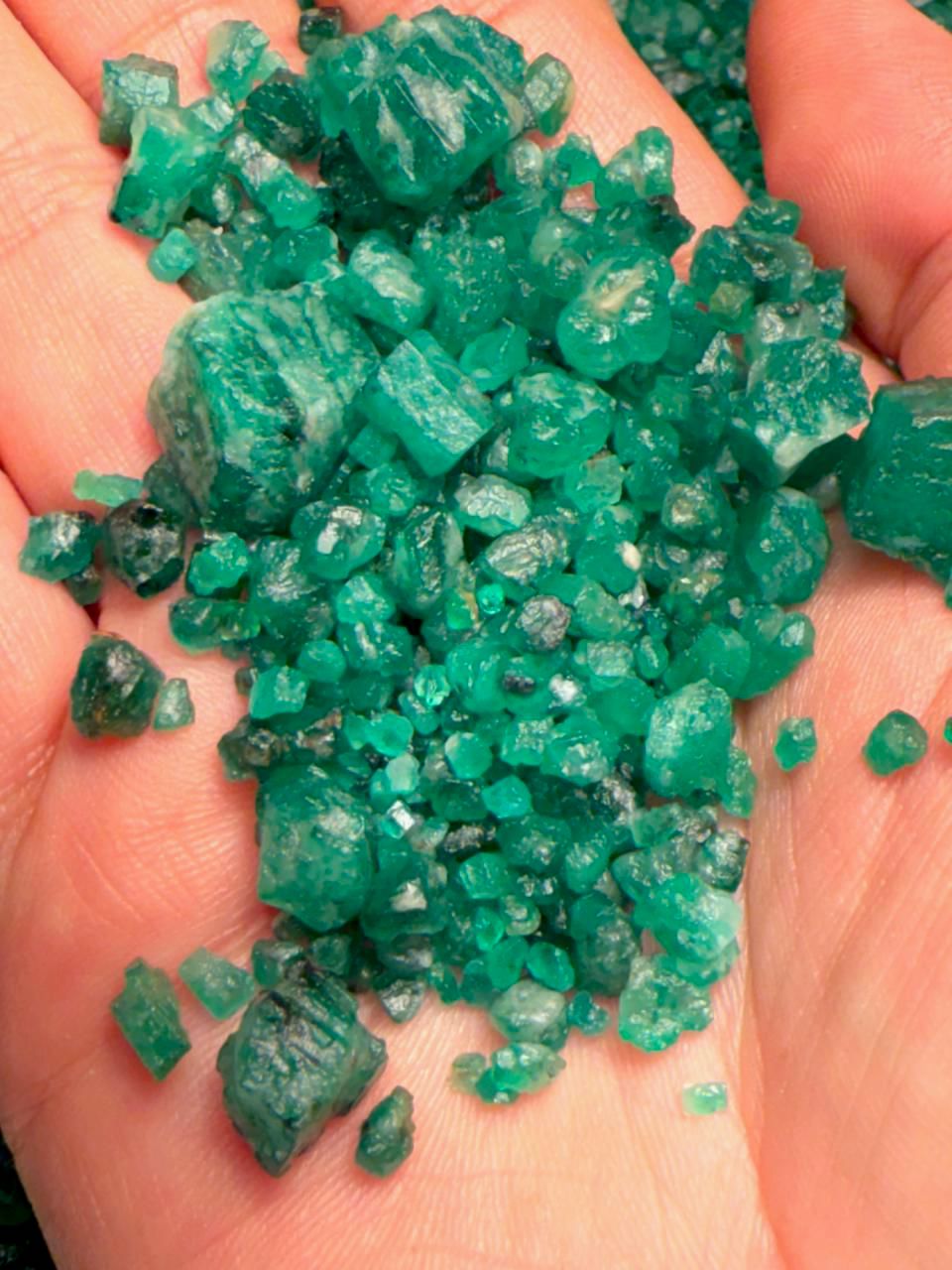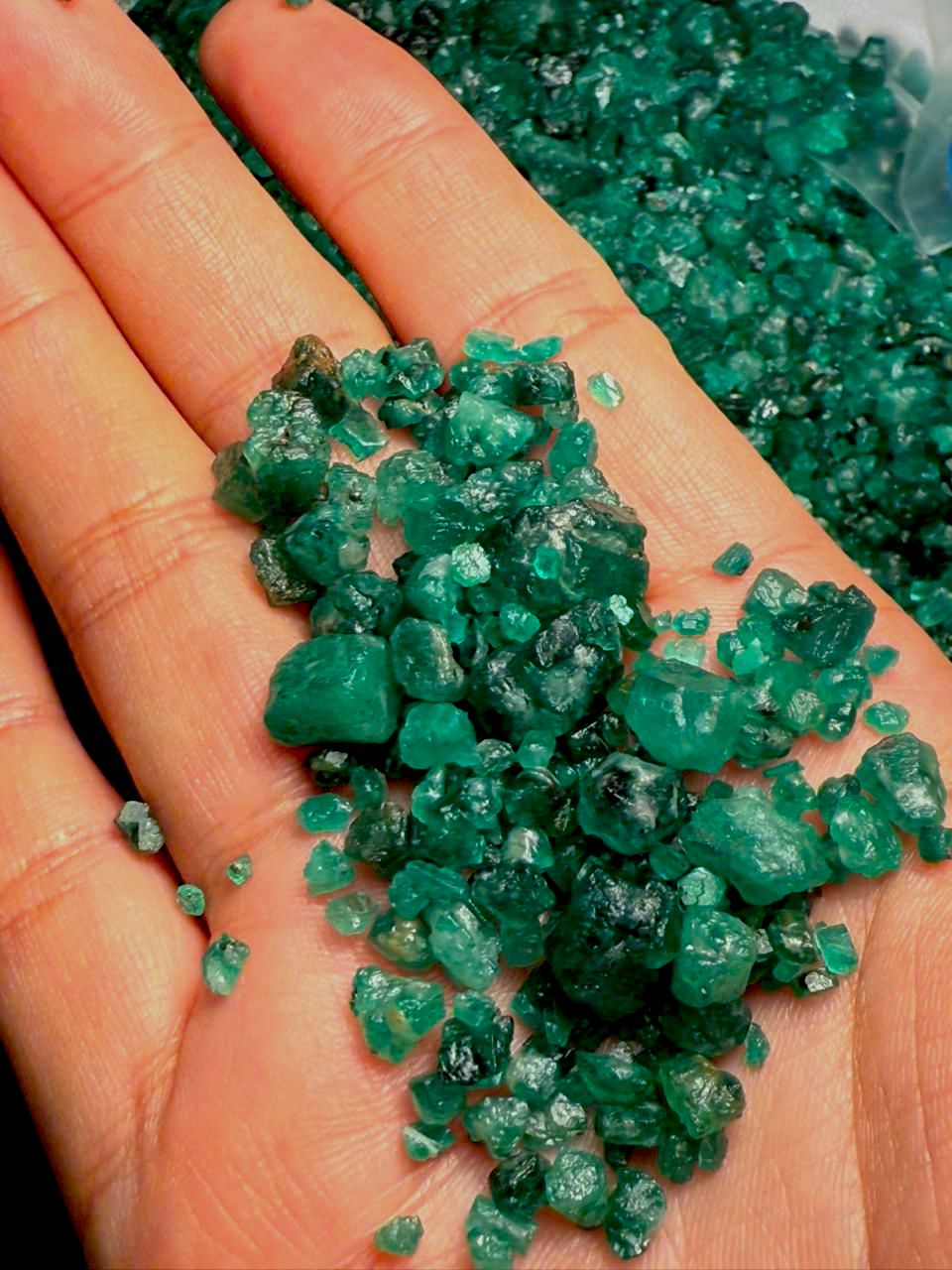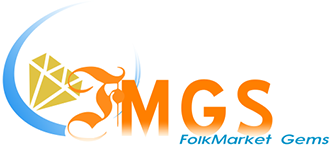Which Gemstones Are Best for Learning How to Facet? This question come to every new learner in faceting. This is definitely good to know before selecting the rough gemstones suitable for faceting, it's important to understand the concept of faceting and facet-grade gemstones that what is faceting and what are facet rough. Lets have a look into it.
Introduction to Facet Grade Rough Gemstones
Raw gemstones are uncut, and unpolished state of natural gemstones and minerals which are extracted directly from the earth by human hands. The mining of natural stones require special tools, equipments and hardworking.
When starting on gemstone cutting, it's essential to ensure that the stone must have adequate gem-quality characteristics to achieve the desired shape and brilliance through reflection from its facets. For facet-grade rough gemstones, clarity, transparency, and minimal imperfections are necessary. The more the gem quality and clarity, the more light will be reflected from within the stone.
The rough stones meeting these specified criteria will fetch higher prices and hold significant value in the market. Though facet-grade stones might have inclusions, their table and upper surface must show gem-like characteristics and a glossy finish so it can show their brilliance. Interestingly, even opaque stones are now being faceted, despite their lack of transparency.

Grading of raw stones is necessary for assessing for cutting and faceting. It helps the gemstone cutters to understand the characteristics and potential of each stone, making them informed and make them ready for decisions during the cutting and polishing process.
What are types of Facet Grade Stones?
From precious to semi precious, there are various gemstone varieties which can be faceted such as emeralds, rubies, sapphires, tourmaline, peridots and many more. But if you are a beginner and want to start faceting, it is always advised to start from the cheap priced stones such as quartz. Quartz has 7 hardness on Mohn scale and it is easy to handle this stone. Further there involves simple faceting methods to cut quartz and polishing it. Quartz has various colorful varieties such as amethyst, citrine, lemon quartz (usually it is irradiated), black citrine, prasiolite, lavender quartz and many more.

Explore Wide Variety of Facet Rough Parcels Wholesale
Shop medium to high-quality rough gemstones ready for cutting and polishing — perfect for jewelers, collectors, and lapidary enthusiasts.
Shop Now →Folkmarketgems have designed mixed gemstone bundle deals varieties for learners. In one package, one can get variety of gemstone to start faceting. Check the deals of facet grade rough gemstones here....
Further, starting faceting on precious stone is not advisable. So far as corundum is considered, it is always unpredictable that what will come out after faceting corundum stone. Sometime apparently imperfect stone give excelletn result and sometime good looking stone does not give result. Corundum hardness is 9 on Moh scale. It is a hard stone. Corundum varieties are rubies and sapphires. However, if you want to practice faceting corundum, start from low grade corundum. Check here medium grade rubies and sapphires parcel.
List of Popular Gemstones for Starting Faceting
Here is list of popular gemstones for starting a faceting
We will highligh here now each stones:-
1- Starting with Quartz for Faceting
The first thing in mind about quartz is that quartz is a cheap stone however it is difficult to polish quartz stone due to hardness. However, you can collect the big size and of good color with maximum clarity in quartz. It is inexpensive stone and one can get quantity and quality both within the budget.
Quartz have many colors and give you variety to work on many varieties such as amethyst, citrine, smoy citrine, lemon quartz, prasiolite, rose quartz and so on.
2- Starting with Beryl
Beryl have 4 major stones such as emeralds, aquamarine, morganite and goshenite. Among them, emerald is the most brittle stone. However one can work on other fine varieties of beryl which are aquamarine and morganite.
Fine qualities of aquamarine and morganite come occasionally so one can get good size, color and shape of raw aquamarine or rough morganite. However, it is extremeley difficult to get clean emerald stones. Emeralds are mostly heavily included or oiled right after extracting from mine.
3- Starting with Tourmaline
Tourmaline stones are easy to cut and handle with especially for those who are just entering in the faceting field. However, tourmaline is comparatively an expensive stone.

Though it is easy to cut this stone however, we would not recommend to start faceting with tourmaline because it will not be worthwhile to spend $$$ on tourmaline. Clean tourmaline within good size will be expensive. In some cases, particular color of tourmaline like Paraiba, bi color and red tourmaline becomes more expensive.
4- Starting with Garnet Stones
Starting with garnet stones for faceting seems easy, yet faceting a sizeable garnets will be challenging and costly to get.
Damages are common during the initial stages of faceting. It is necessary to be expert for handling tasks like saw cutting, dopping, and polishing. Stones are prone to damage throughout the faceting processes. It's advisable to begin cutting with more affordable stones like quartz and quartz varieties like amethyst, or citrine.
Mixed Gemstone Bundle Deals for Learners
Folkmarketgems have designed mixed gemstone bundle deals varieties for learners. In one package, one can get a variety of gemstones to start faceting. Check the deals of facet grade rough gemstones here…
Colorful varieties such as amethyst, citrine, lemon quartz (usually irradiated), black citrine, prasiolite, lavender quartz, and many more.
How Can You Classify the Facet Rough ?
Facet grade stones are selected and graded on following way:-
- Color
- Clarity
- Raw Shape of the Stone and Weight
- Cut
1- What should be the clarity of stone for faceting?
Mostly it should be inclusion free so during faceting, you can visualize the correct facets. If you cut included stones, visibility of cutting will be less. However inclusion free stones are normally expensive even in semi precious stones. Therefore, you can work on glass, quartz or synthetic on your first stone to facet. One must learn about clarity type of the stones.
Here are clarity types:-
-
Inclusion Free: These stones normally are eye clean, have no inclusions under magnification. They are either called eye clean stones or loupe clean stones
-
VVS (very very slightly inclusions): Such stones have a very very slight inclusions. Normally only a few points or needles or dots inside the stone which are normally not visible by eyes but under the loupe.
- VS (Very Slightly Included) : These stones have very minor inclusions and can be seen under magnifications only.
- Si (Slightly Included): Such stones have normally minor inclusions which are visible under magnification. However such inclusions do not affect the overall beauty of the stones.
- Included : These stones have visible inclusions which can affect the transparency of the stones and quality both.
2- Selecting Stones by Color
Gemstones are categorized based on their color, having a range from intense hues to light or medium light color shades. The color plays a vital role in showing the stone's beauty. Colorless stones have no hue. Stones with a medium or near-colorless appearance may feature extremely faint colors, such as diamonds or other gemstones. Additionally, colored stones like green, yellow, red, and blue show distinctive and vibrant hues.
3. Selection of Shape in Raw Stones and Weight
Before starting an ideal cutting, one must learn about right selection of shapes in raw stones. For example if you are cutting stones into emerald cut, the stone should match the final shape in raw form also. Look at the thickness and total weight of the raw stone also. For example, if you want to cut 4 carat stone, the weight should of raw stone should be enough to get 4 carat yield in outcome.
Conclusion
Starting a faceting as a bignner is definitely a challenge and selection of stones to start with is another big challenge. One must have knowledge about the characteristics of stones such as cleavage, fractures, crystal structure so the gems cutter can identify the best part of the stone to cut with it.
Learn about What is Cleavage in Stone? This is very interesting article for gemstone cutters to learn before starting cutting.
Will this article help you in understanding of the faceting as a beginner? If there's anything you'd like to add, feel free to let us know! Give your comments below to let us know.









































0 comments